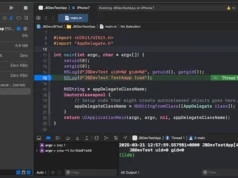Dive into the world of Tartufo, a powerful tool designed for scanning and managing security vulnerabilities through regular expressions.
This article offers a comprehensive API reference guide for all public classes and functions within Tartufo, from configuring scans to compiling and applying rules.
Learn how to effectively utilize Tartufo to enhance your security protocols and streamline your codebase examination process.
This part of the documentation lists the full API reference of all public classes and functions.
tartufo.config
tartufo.config.compile_path_rules(patterns)Take a list of regex strings and compile them into patterns.
Any line starting with # will be ignored.Parameters
patterns (Iterable[str]) – The list of patterns to be compiledReturn type
tartufo.config.compile_rules(patterns)Take a list of regex string with paths and compile them into a List of Rule.Parameters
patterns (Iterable[Dict[str, str]]) – The list of patterns to be compiledReturn type
List of Rule objects
tartufo.config.configure_regexes(include_default=True, rule_patterns=None, rules_repo=None, rules_repo_files=None)Build a set of regular expressions to be used during a regex scan.Parameters
- include_default (
bool) – Whether to include the built-in set of regexes - rules_files – A list of files to load rules from
- rule_patterns (
Optional[Iterable[Dict[str,str]]]) – A set of previously-collected rules - rules_repo (
Optional[str]) – A separate git repository to load rules from - rules_repo_files (
Optional[Iterable[str]]) – A set of patterns used to find files in the rules repo
Return type
Set of Rule objects to be used for regex scans
tartufo.config.load_config_from_path(config_path, filename=None, traverse=True)Scan a path for a configuration file, and return its contents.
All key names are normalized to remove leading “-“/”–” and replace “-” with “_”. For example, “–repo-path” becomes “repo_path”.
In addition to checking the specified path, if traverse is True, this will traverse up through the directory structure, looking for a configuration file in parent directories. For example, given this directory structure:
working_dir/
|- tartufo.toml
|- group1/
| |- project1/
| | |- tartufo.toml
| |- project2/
|- group2/
|- tartufo.toml
|- project1/
|- project2/
|- tartufo.tomlFor more information click here.














.png)


